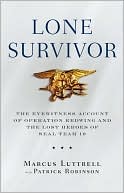Warriors of the Rising Sun: A History of the Japanese Military
During World War II, many of Japan’s soldiers committed such crimes against humanity that the world recoiled in horror. During the notorious six-week-long "rape of Nanking” in 1937, Japanese forces murdered at least 200,000 men, women, and children. Throughout the Pacific War, Allied prisoners were often starved, tortured, beheaded, even cannibalized. Although Japan’s military men fought bravely against outnumbering forces again and again, their astonishing brutality made them a loathsome,...
Search in google:
Traces the Japanese military’s evolution from chivalrous soldiers to a brutal killers. Publishers Weekly Promising a concise overview of modern Japan's military development, the usually first-rate Edgerton (Like Lions They Fought) here offers little more than a pastiche compiled from Western secondary accounts. After a long discussion of the 1860 Anglo-French intervention in China, the Boxer Rebellion and the Russo-Japanese War, he concludes that the Japanese were brave and skillful soldiers who treated captured enemies well, and who on the whole were less brutal than were Western forces. Neither observation is particularly original, and much of the discussion, here and elsewhere, takes anecdotes too much at face value. In the book's second half, Edgerton concentrates on Japanese atrocities during the China and Pacific wars. However, he does little more than demonstrate that some Japanese at all levels were opposed to and appalled by the behavior of others, and offers little of substance about the nature of Japan's armed forces, their internal dynamic, their motivation or anything else that might provide context. Edgerton's assertion that Eisenhower was opposed to the atomic bombing of Japan takes no account of Barton Bernstein's exposure of that myth in a 1987 journal article (Journal of Strategic Studies) that does not appear in the bibliography. Similar omissions and/or errors abound. The final chapter, "From Chivalry to Brutality," does no more than repeat clichs about Japan as a rigidly controlled society that came too late to the imperial feast. (July)
Acknowledgments11Introduction131The Crucible of Conflict - Northeast Asia212The Boxer Rebellion - Japan in the World's Eyes593"And Where May Japan Happen to Be?"1004"Brute Force, Anguish, and Humiliation"1475"You Can Keep Tokyo for Yourself"1876"To Hell with Babe Ruth"2227"Remember Pearl Harbor"2528"Not Necessarily to Our Advantage"2799From Chivalry to Brutality305Epilogue325Notes332Bibliography354Index369
\ Publishers Weekly\ - Publisher's Weekly\ Promising a concise overview of modern Japan's military development, the usually first-rate Edgerton (Like Lions They Fought) here offers little more than a pastiche compiled from Western secondary accounts. After a long discussion of the 1860 Anglo-French intervention in China, the Boxer Rebellion and the Russo-Japanese War, he concludes that the Japanese were brave and skillful soldiers who treated captured enemies well, and who on the whole were less brutal than were Western forces. Neither observation is particularly original, and much of the discussion, here and elsewhere, takes anecdotes too much at face value. In the book's second half, Edgerton concentrates on Japanese atrocities during the China and Pacific wars. However, he does little more than demonstrate that some Japanese at all levels were opposed to and appalled by the behavior of others, and offers little of substance about the nature of Japan's armed forces, their internal dynamic, their motivation or anything else that might provide context. Edgerton's assertion that Eisenhower was opposed to the atomic bombing of Japan takes no account of Barton Bernstein's exposure of that myth in a 1987 journal article (Journal of Strategic Studies) that does not appear in the bibliography. Similar omissions and/or errors abound. The final chapter, "From Chivalry to Brutality," does no more than repeat clichs about Japan as a rigidly controlled society that came too late to the imperial feast. (July)\ \ \ \ \ Library JournalDuring World War II, the Japanese military committed innumerable crimes against humanity. This is well known. What is not well known is that early in this century the Japanese were celebrated for their chivalry in warfare and for their kindness to enemy wounded and prisoners. Edgerton (sociology and anthropology, UCLA) attempts to explain why the Japanese changed so radically in the period between the Russo-Japanese War and World War II. Japan evolved from a nation of small peasant farmers to a major power in just 40 years and Japan felt inferior to European powers until its victory over Russia in 1905. Led by the new samurai, it began expanding in Mongolia, Korea, and China, and this aggression ultimately led to World War II. While Edgerton cites economic, social, and political reasons for the Japanese about-face, he does not make adequately clear why the Japanese became barbarians within a few years. Still, this is a fascinating work that should be in all World War II collections.Stanley Itkin, Hillside P.L., New Hyde Park, N.Y.\ \ \ Kirkus ReviewsAn anthropologist's clear-eyed appreciation of how Japan's military—justly famed as a chivalrous ally and adversary in the Asiatic conflicts of the late 19th and early 20th centuries—became a bestial rabble-in-arms that committed unspeakable atrocities during WW II.\ Drawing largely on secondary sources, Edgerton (UCLA School of Medicine; The Fall of the Asante Empire, 1995, etc.) produces an engrossing narrative that traces the development of the island nation's armed forces from the Meiji Restoration to the present day. Having provided a brief rundown on the country's bushido/samurai tradition, he documents the accomplishments of Japan's modern army and navy in belligerencies ranging from the Sino-Japanese War of 189495 through the Boxer Rebellion, the savage Russo-Japanese War, and WW I (in which Japan was allied with western Europe). Along the way, the author provides vivid examples of the knightly way in which the emperor's warriors went about their grim business. Edgerton goes on to document the corrosive effect on Japan's military of America's racist immigration policies, the emergence of ultranationalist fanatics within the ruling class, and the economic pressures endured by an insular industrial power almost entirely lacking in natural resources. These and other factors, he argues, help explain the horrific barbarities Japan's brutal, fanatic soldiery committed against helpless civilians, POWs, and wounded foes throughout East Asia from the early 1930s through the harsh reckoning of V-J day. In the author's mind, however, the issue of whether the nation's self- defense force will evolve into a guarantor of the peace in its volatile region or revert to the unholy practices that resulted in WW II's unconditional surrender remains a very open question.\ An incisive account of a consequential state's use and abuse of military power.\ \ \








